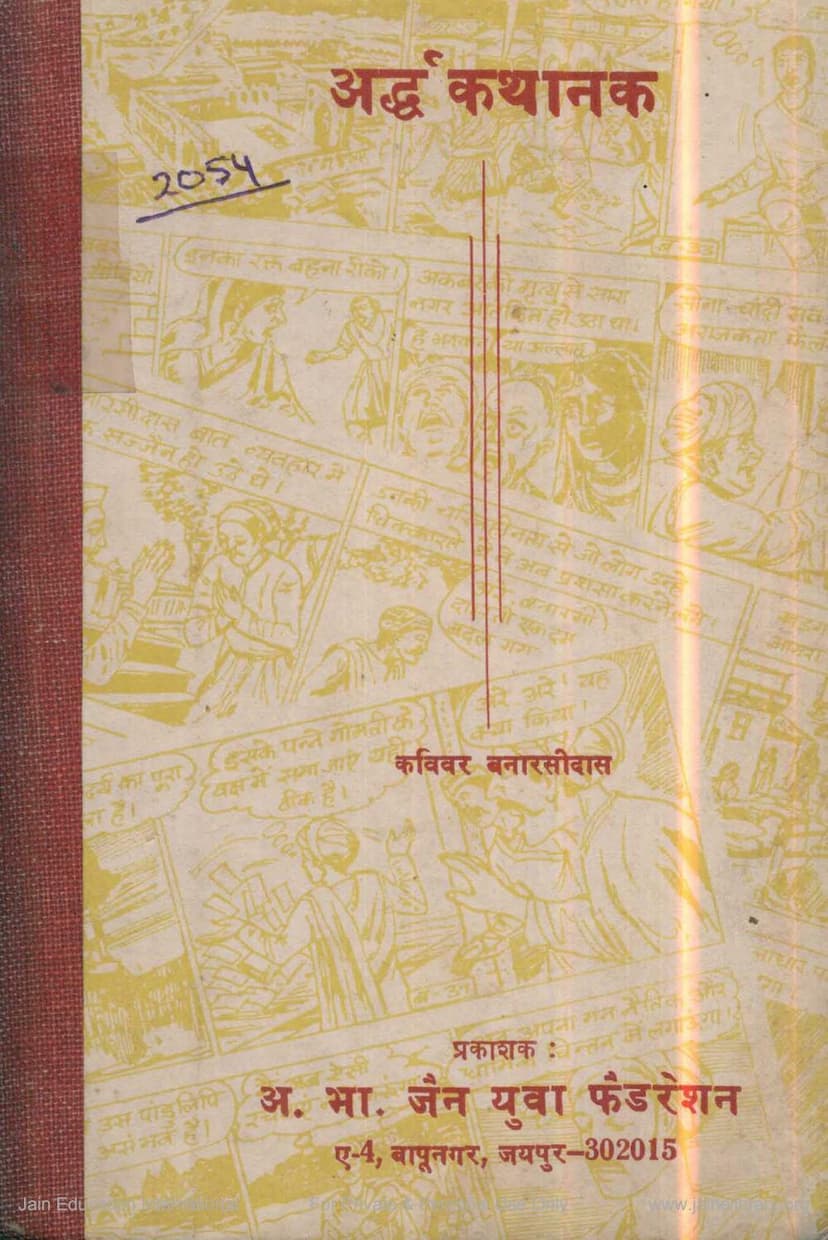Arddha Kathanak
Added to library: September 1, 2025

Summary
This summary is based on the provided text, which is the published edition of "Arddha Kathanak" by Banarasidas, published by Akhil Bharatiya Jain Yuva Federation. The text includes a preface, introductory essays, the original text, and appendices.
Overview of "Arddha Kathanak"
"Arddha Kathanak" (meaning "Half-Tale" or "Half-Narrative") is a seminal autobiography written by the Jain poet Banarasidas in the 17th century. It is considered the first true autobiography in Hindi literature. The title signifies that it covers only half of the author's projected lifespan, as he intended to live to 110 years. The work was completed in 1641 AD (V.S. 1698).
Key Aspects of the Text:
-
Author and Significance: Banarasidas was a prominent Jain poet, philosopher, and merchant. "Arddha Kathanak" is highly regarded not only for being the first autobiography in Hindi but also for its candid and introspective portrayal of the author's life, thoughts, and the socio-historical context of 17th-century North India.
-
Content and Themes:
- Personal Life: The autobiography details Banarasidas's life from his childhood, education, marriage, business ventures, family losses (including the death of his wife and all nine children), spiritual journey, and personal struggles.
- Business and Trade: Banarasidas was a merchant, and the text provides valuable insights into the trading practices, economic conditions, and challenges faced by merchants in that era. It describes his various attempts at business, his financial ups and downs, and the risks involved in long-distance trade.
- Spiritual and Philosophical Journey: The work chronicles Banarasidas's evolving spiritual understanding. Initially influenced by Jainism (specifically the Shvetambara tradition), he later explored other philosophical and religious ideas, at one point even renouncing his written works into the Gomti river due to spiritual disillusionment. He eventually found solace and understanding through a deeper study of Jain philosophy, particularly influenced by the works of Kundakunda and commentaries by figures like Rajmall.
- Social and Historical Context: The autobiography offers a vivid picture of the social, cultural, and political landscape of 17th-century India. It mentions rulers like Akbar, Jahangir, and Shah Jahan, describes the impact of political events on daily life, and portrays social customs, beliefs, and superstitions prevalent at the time.
- Candid Self-Reflection: A unique feature of "Arddha Kathanak" is Banarasidas's remarkable honesty and self-awareness. He openly discusses his weaknesses, flaws, and mistakes, including his youthful infatuation, moral lapses, and business failures, alongside his spiritual aspirations and achievements. This unflinching self-appraisal sets him apart from many other autobiographical writings of the period.
- Language and Style: The autobiography is written in a simple, accessible, yet poetic style in what Banarasidas calls "Madhyadeshi Boli" (language of the central region), which is seen as an early form of Khadi Boli with influences from Braj Bhasha. The language is natural, engaging, and filled with colloquialisms and idioms, making it relatable and entertaining for the reader. The narrative flows like a story, often infused with humor and philosophical reflections.
-
Publisher and Editions: The provided text is a publication of the Akhil Bharatiya Jain Yuva Federation, highlighting their effort to make this important work accessible. The preface mentions previous editions, including one edited by Pt. Nathuram Premi, and notes the continuous availability of Banarasidas's other significant work, "Samaysar Natak."
-
Introductory Essays: The accompanying essays by scholars like Dr. Motichand and Pt. Banarasi Das Chaturvedi provide critical analysis of "Arddha Kathanak," discussing its place in Hindi literary history, its linguistic features, its historical significance, and Banarasidas's intellectual and spiritual development. They praise its authenticity, straightforwardness, and the author's courage in revealing his inner self.
-
Appendices: The appendices include valuable supplementary information such as glossaries of names, places, and terms, which greatly aid in understanding the text.
Overall Impression:
"Arddha Kathanak" is a treasure trove of information about 17th-century Indian life, Jain philosophy, and the personal journey of a remarkable individual. Banarasidas's unflinching self-portrayal, blending business acumen with spiritual seeking, and his engaging narrative style make this work a timeless classic. The publication by the Akhil Bharatiya Jain Yuva Federation ensures that this significant piece of Indian literary and historical heritage is preserved and appreciated.